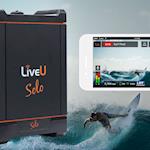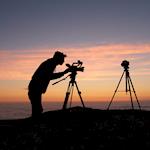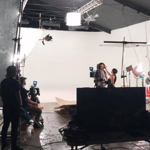Working as a photographer or a cameraman during winter is not a pleasant feeling. Being in that business, you have to be present on set for hours, working without a break, and under any weather conditions. Furthermore, when you do take breaks, you need to store your equipment somewhere before proceeding. Cold weather is not good for your health, nor is it good for the state of your camera. With that said, here are a couple of the best tips for storing filming equipment in a cold climate.
Rule number one - no humidity!
It often happens that photographers try to protect their camera when filming or shooting by placing it inside their jacket. If you do this in cold weather, you are risking condensation to form on the lens. That is something you must avoid at any cost.
Following that example, always store your camera in a dry place with no humidity, especially when packing and relocating filming equipment.
Take out the batteries.
If you are storing filming equipment in a cold climate for a more extended period, never leave the batteries inside. A battery gone bad can bloat, explode, and spill acid inside your camera, ruining it completely.
It is also a good idea to keep the batteries inside a small warmer compartment. It usually has soft sponges inside that keep the batteries at optimal temperature.
Differences in storing older cameras vs. modern cameras
If you have an older model with a photographic lens, remember that mechanical oil is used inside. Before storing filming equipment in a cold climate, be sure to take the camera apart and remove the oils. This process of winterizing is not necessary with modern cameras. Today, they either use a low viscosity lubricant, or they don't have lubricant at all.
The effect of cold weather on plastic parts and film
Plastic parts and film are usually very bendy. However, if exposed to cold weather, they will become brittle. When handling a camera, be extra careful when opening plastic covers because they may break. Similarly, a roll of film may snap in half if left too long in low temperatures.
With that in mind, provide extra padding for your filming equipment. All the parts need to stay at an optimal temperature. This way, you will avoid potential damage when handling the equipment during extreme weather productions.
Use a camera bag
This goes without saying, but using an original camera bag is imperative. It is built to keep your equipment safe and has all the compartments for parts. Furthermore, it is padded from the inside, so it will keep the camera relatively safe from cold weather.
The danger of rapid temperature changes
When filming in cold weather, you probably can't wait to go inside where it's warm and cozy and get a hot beverage to warm up.
However, that's when problems with your camera can occur. As mentioned at the beginning, condensation is the number one enemy of filming equipment.
Most cameras today are built to function on 32F or 0 degrees Celsius. However, that does not mean that this temperature will not affect the camera in any situation. If you walk into a heated room after letting your camera cool down outside, condensation will form on the lens, not just outside but inside as well.
This issue will remedy itself if you let the camera warm up to room temperature. It might take some time, but eventually, the condensation will evaporate.
However, if you walk into a heated room, allow the moisture to form inside the camera, and then store it in a room where there is not enough temperature to help the condensation evaporate, you are in serious trouble. The camera may stay like this for some time, and the liquid inside will damage the electronics.
Now that you know this, always allow your camera to stabilize the temperature before storing it for a longer period.
How to store filming equipment in a cold climate while working
When changing locations between filming sessions in a cold climate, it is useful to have a system for storing filming equipment. As mentioned above, you must allow your camera to heat up to room temperature. Another critical step is to have a safe, dry place to leave it, and mobile units might be the solution to this situation. Having portable storage at your disposal is not only beneficial to you but to the entire filming crew, presuming you are not working alone.
A couple of best practices to help with storing filming equipment while filming in a cold climate
Following these suggestions will help with storing your camera in cold weather. To provide even more help, here are a couple of additional tips:
- Always use hand warmers; they will help get the camera to room temperature much faster
- You can use the same strategy to warm up the batteries
- In lack of a better solution, a plastic bag will keep the condensation away from your camera
- LCD screens and battery power are affected by cold weather. You may experience "slowness" and color changes on the camera's display, but everything will get back to normal as soon as the camera is warmed up.
- Remember that metal and cold weather create a deadly combination. For that reason, all cameras today are made out of plastic or at least have plastic covers. However, that is not the case with a tripod, as you can still find metal ones in use. If you have a similar one, you can buy insulation sleeves to cover the metal legs. The second option is to get a tripod made out of carbon fiber.
These tips for storing filming equipment in a cold climate have proven useful for many professionals and amateurs alike. With that in mind, protect your camera the best you can, so it can serve you well for many years to come!











Comments
There are no comments on this blog post.